Whether you’re a history fanatic, art enthusiast, or flavour hunter, Rome is definitely one of the places you would aim to check off your bucket list. The Eternal City offers something for everyone and you might even end up getting overwhelmed by the countless options available for what you can do. Worry not for this article will provide you with the best things to do in Rome.
Also read: 15 Airbnbs in Rome for the Perfect Roman Holiday
Things to do in Rome: Historical sites
1. Explore the Colosseum and Roman Forum Ruins
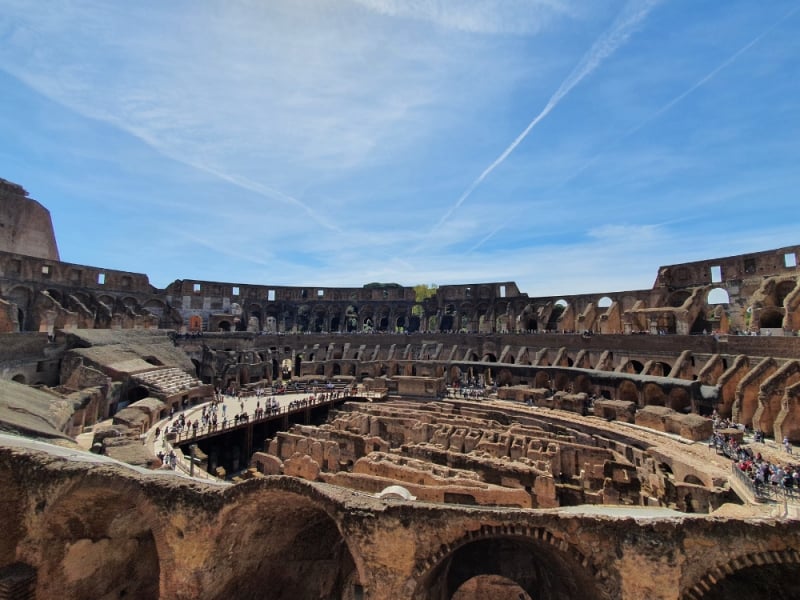
Image credit: Rui Xian Wang
Anyone visiting Rome would know not to miss the icon of this city. The Colosseum still stands today as the world’s largest amphitheatre, surviving even earthquakes and bombings during its 2,000-year history. Visitors would be given the chance to enter the very site of the famed gladiator fights, which is lesser known to have also served as the home to displays of exotic animals and as an execution ground.
As you stand under the blistering heat of the Italian summer sun, it would make sense that the Colosseum was built with a velarium – a canvas roof that provided the fortunate Roman people with some form of refuge from the sun, and served as an all-natural spotlight for the performances happening down below. Try spotting the remaining corbels and sockets found all around the perimeter that once held up this massive roof when you visit this attraction!
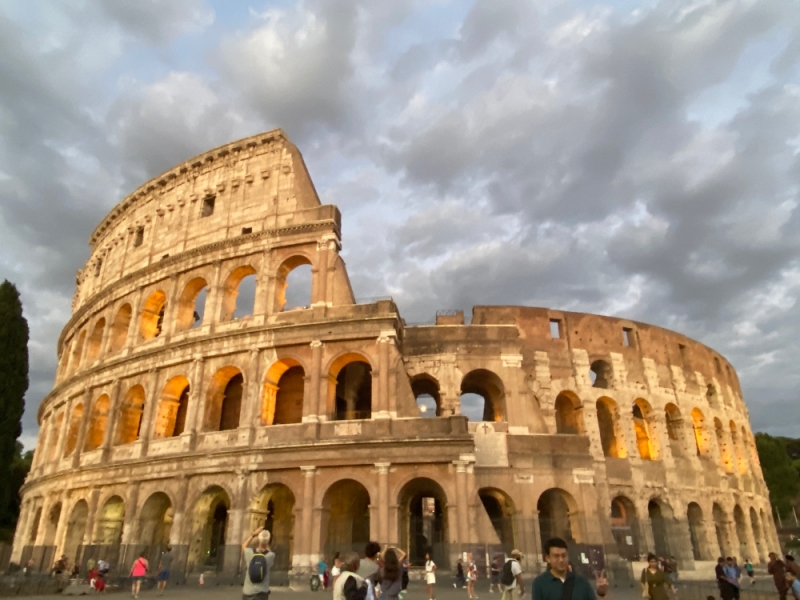
Image credit: Fenna Hoi
Booking a guided tour is a sure way of avoiding the queues and these tickets allow you access to both the Colosseum and the Roman Forum. Be sure to check out these monuments also during the nighttime as the backlit lighting definitely casts an eerie yet magnificent touch to these still structures and juxtaposes the scene you get during the day.
2. Roam around the Palatine Hill
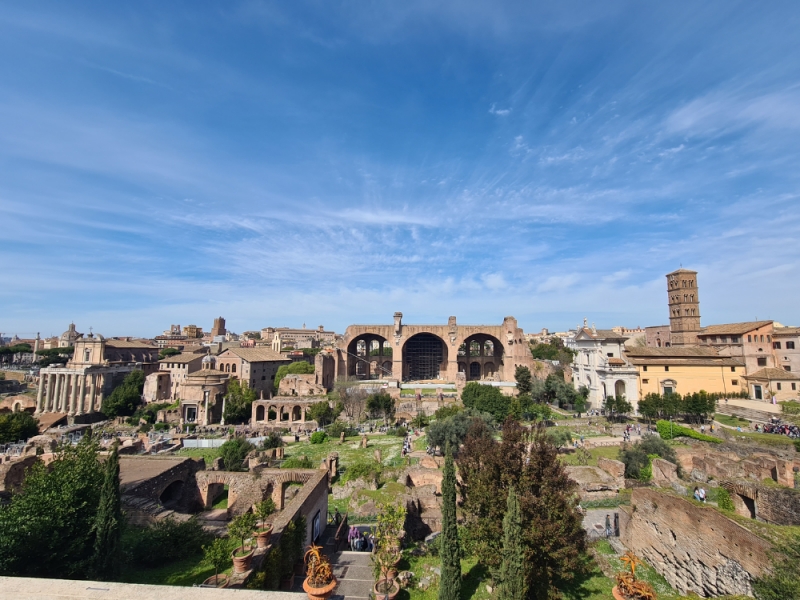
Image credit: Pang Wen Ni
Befittingly located beside the Colosseum, the Palatine Hill was home to many Roman imperial palaces. It provided the highest vantage point over the hills where Rome was built and allowed a strategic look over the River Tiber. If you’re looking for something to do in the evenings in Rome, you can enjoy a peaceful walk away from the bustling city life and try spotting what remains of the Circus Maximus which hosted the Roman chariot races, or even the Baths of Septimius Severus.
3. Visit the Victor Emmanuel II Monument and the Tomb of the Unknown Soldier
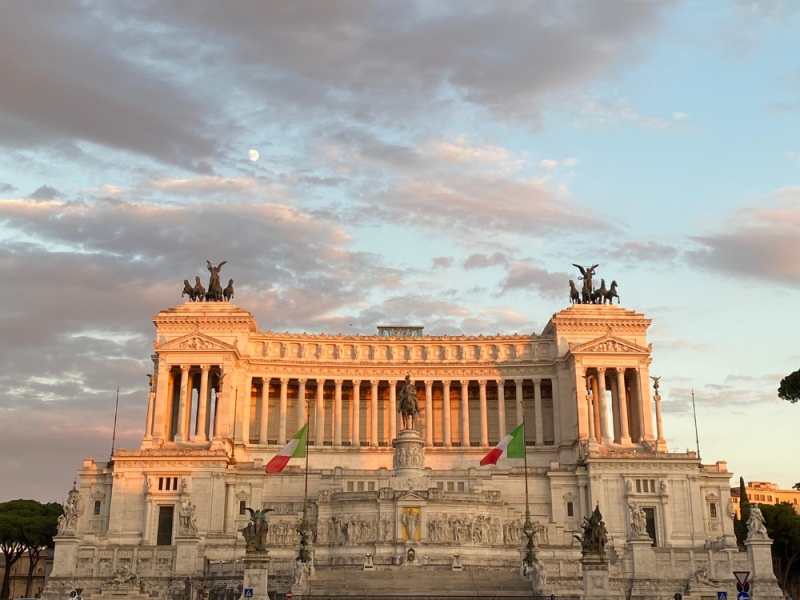
Image credit: Fenna Hoi
Unlike the more famed Colosseum, this monument can actually be spotted from many locations within the city as it sits right in the heart of town, at the top of Piazza Venezia.
Even though some would be satisfied to view the Victor Emmanuel II Monument from a distance, it is definitely worth the short walk to get closer and visit the attraction itself to experience the grandeur up close – after all, it is the symbol of Italy’s national pride and unification.
This monument was also chosen to be the resting place of an Italian soldier who had died during battle in World War I, making it the Tomb of the Unknown Soldier. This tomb can be found under the statue of the goddess Roma where it is meant to represent all the soldiers who had lost their lives and is honoured till today with the continuous burning of two eternal flames, protected by the guards of honour.
4. Discover the Roman Catacombs
These catacombs are more than just dark and damp passageways where you will chance upon skeletal remains. In fact, they are time capsules that tell the history of the Roman city. From inscriptions of names on the stones with small crosses next to them which reflect the persecution of the Christian religion back then, to large quantities of spaces prepared for children to manage the then very high infant mortality rate, this place is not just a spooky zone to avoid!
Since all the catacombs are located outside the city, as ancient Roman law forbade the dead to be buried inside, it is advised to book a tour where tickets, transport, and a guided tour will be included, and it will make your journey to and fro much more convenient.
5. Marvel at the beauty of St. Peter’s Square and St. Peter’s Basilica
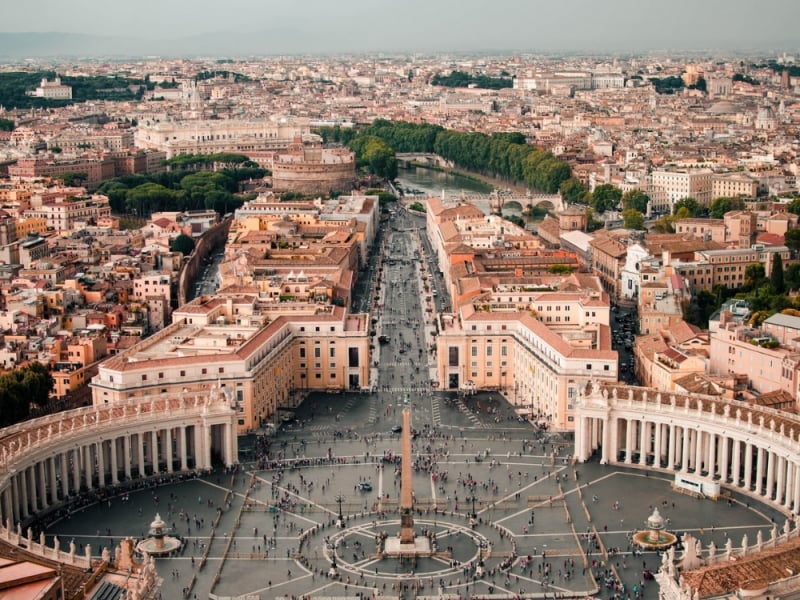
Image credit: Caleb Miller
Enter St. Peter’s Square through the Via della Conciliazione, and as the square slowly looms into view, you would first be greeted by the obelisk carried all the way from Egypt to Rome in 1586. This square, which is rather circular in shape, is flanked by 284 columns which support 140 statues of saints, and can hold 300,000 people: a capacity large enough to accommodate the weekly Papal Audiences. This square was also named after Peter, believed to be the first Pope, who was killed onsite.
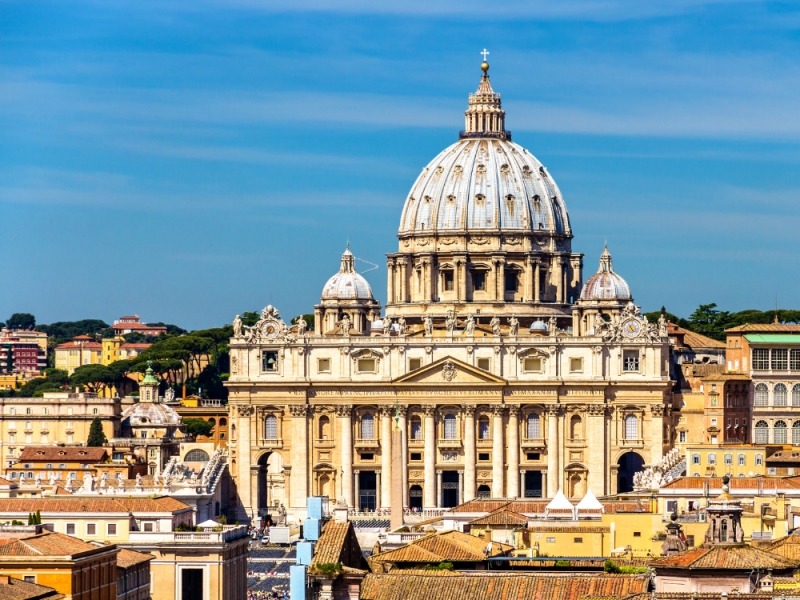
Image credit: Leonid Andronov via Canva Pro
One of the most impressive features of St. Peter’s Basilica is its size, as it is the world’s largest church, spread over 21,000 square metres. Given its size, several famed designers had to work on it, including Bramante, Raphael, Antonio del Sangallo, Michelangelo, and Carlo Maderno, making it a combination of many astounding art pieces.
The bronze statue of Peter stands within the basilica at the base of one of the columns that support the massive dome. You would be able to see that the right foot has worn away due to the many pilgrims touching or kissing it to pray for blessings.
If you are able to, definitely do not miss out on the climb to the top of the dome of St. Peter’s Basilica as you will not only get to see the mosaics that make up the dome’s interior up close, but right at the top, you will be able to get a stunning bird’s eye view of St. Peter’s Square below. When you walk out onto the roof of the basilica, you will be greeted with the statues of Jesus and his apostles each six metres tall!
Things to do in Rome: Best places for Instagram-worthy photos
6. Pose with the Trevi Fountain
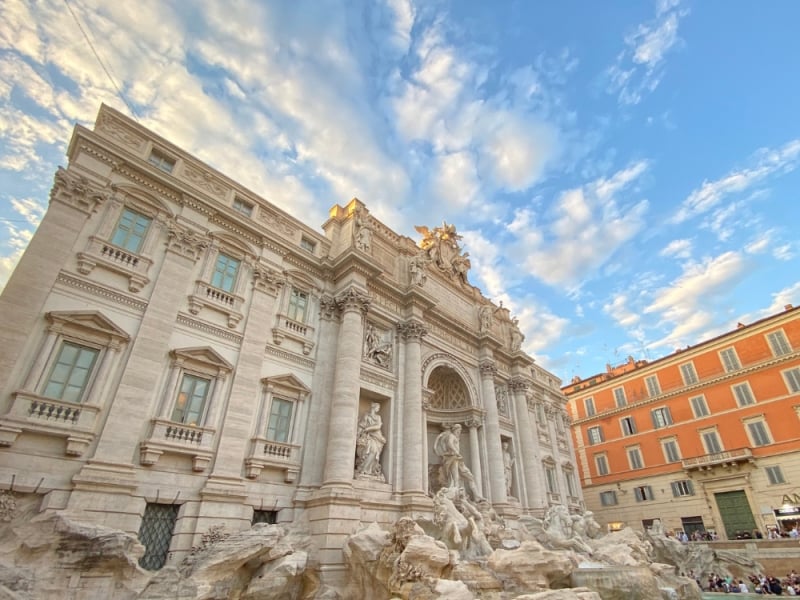
Image credit: Fenna Hoi
Toss a coin, or two, or three into the largest and most elaborately created fountain in Rome, and you might just manifest a trip back to Rome or meet the love of your life. Did you know? The name Trevi is derived from “Tre Vie”, meaning three ways, since the fountain was constructed where its three surrounding streets met. Built with Travertine stone, the same stone in which the Colosseum was constructed, this Baroque-style attraction was designed by Nicola Salvi and took thirty years to complete.
Since many visitors are aware of how crowded this attraction can become, some may try visiting the Trevi Fountain in the earlier hours of the day. However, great minds think alike and you would hence find the attraction equally crowded during those times. Do not worry as it is definitely fine for you to show up at peak timings as most tourists would only spend a few minutes taking their shots and spaces around the fountain clear up relatively quickly!
7. Chill by the Piazza di Spagna
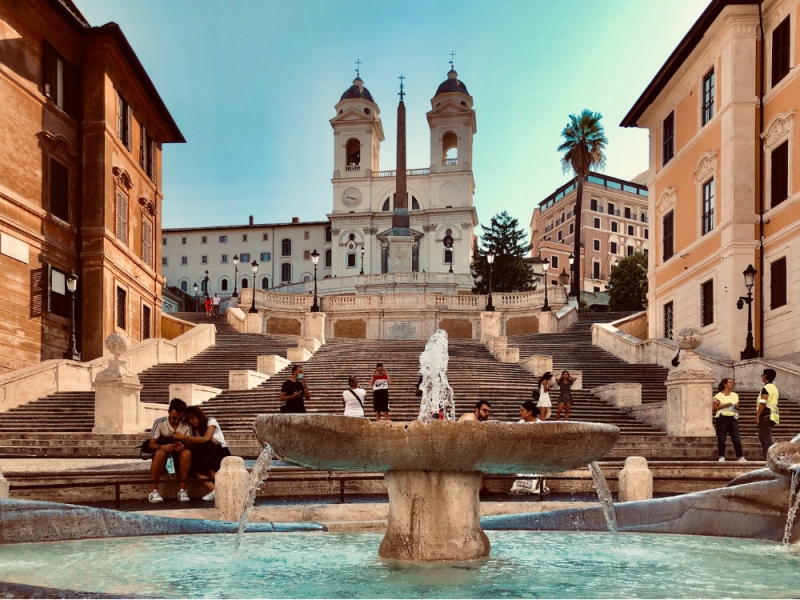
Image credit: Daniel Basso
Piazza di Spana is the ground for four of the most recognisable landmarks in Rome: the Spanish Steps, the Fontana della Barcaccia, the Trinita’ dei Monti, and the Faminio Obelisk. This iconic piazza is not something most tourists would leave out of their itineraries when travelling to this city as it is frequently featured in movie backdrops.
Although you might be tempted to spend a relaxing afternoon chilling and people-watching on Piazza di Spagna, make sure not to choose to sit upon the Spanish Steps because as of 2019, you can receive a fine of €250 due to the ban on sitting on the steps!
Things to do in Rome: Where to try authentic Italian food
8. Fill your stomach at traditional pizzerias
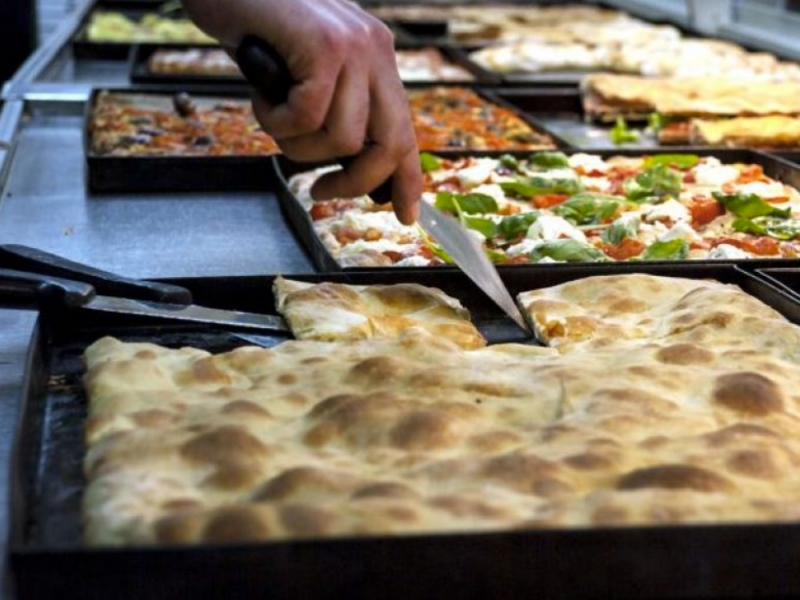
Image credit: La Casa del Supplì Official Website
Travelling to Italy, it would definitely be on your checklist to get your hands on some authentic Italian or even Roman pizza. Definitely withhold your excitement and skip the pizzerias you find surrounding the Colosseum or Trevi Fountain as those are usually tourist traps! Pizza is easily one of the most affordable food options in Rome and you will be able to find yourself rather authentic options in the smaller shops that are found below residential housing where the Romans choose to get their daily lunch and dinner options from!
You would be surprised to find that it is quite a common sight for pizzas to not come in the usual circle shape we get overseas. Rather, pizzas are often made as enormous slabs and later cut into smaller squares when served. It is also not unusual to find these pizzerias selling other dishes such as supplì filled with ham or risotto, mixed grilled vegetables and courgettes, stuffed cannelloni, and meatballs.
9. Savour handmade pasta
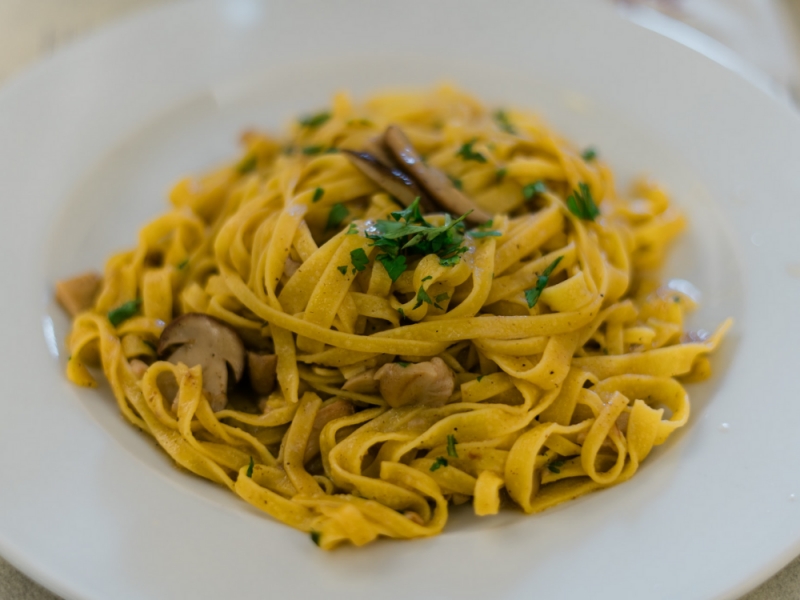
Image credit: Gabriella Clare Marino
Did you know? Although many brands of pasta sauces found outside Italy market “carbonara sauce” as a creamy one, there is actually no cream and only eggs and cheese used in a true Roman carbonara pasta dish!
When you visit the city, be sure to try out the Cacio e Pepe, Gricia, Amatriciana, and of course, the Carbonara as these are known to be the city’s classics. Most pasta places in Rome hand-make their pastas allowing for a true blend and absorption of the sauces with the pasta itself and it would not be surprising to find yourself craving a glass of Italian wine to go with it.
Most pasta chefs in this area are very proud of their work and so you might even get the chance to talk to the chefs about the making of the dishes – of course, only when their restaurants are not bustling with customers like they usually are. That being said, always remember to double-check the opening hours of the restaurants online as they usually take a break during the afternoons and only reopen later at night!
10. Grab yourself a cone of authentic Italian gelato
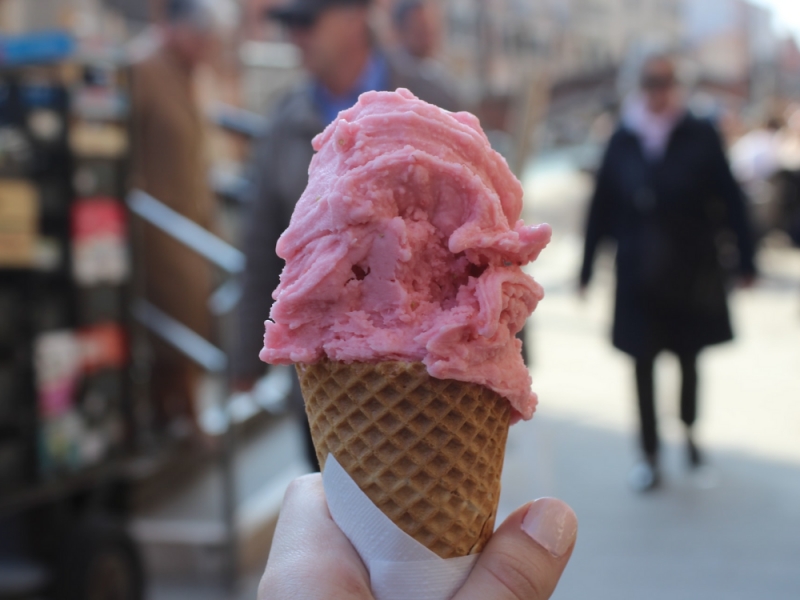
Image credit: Myfanwy Owen
You will never miss a gelato shop anywhere in Italy, and definitely not Rome. On a hot summer afternoon, it would be a really tempting thing to do to pop into one of those stores with almost every flavour of gelato you can imagine, with scoops of gelato stacked high in displays, covered with vibrant and fresh toppings.
If you are looking for truly the best things to do in Rome, be sure to avoid these! Authentic gelaterias are nothing bright and fancy and rather, store this yummy treat in plain, unsuspecting metal tins with lids so that they are kept at a specific temperature, such that you would not even be able to see the flavours themselves until you’ve placed your order.
These stores are admittedly harder to come by so if you have to settle for the former, at least make sure the gelato uses a flat “spade” to serve the gelato rather than a curved ice cream scoop as gelato has less fat and hence, is denser than ice cream!
11. Try local food products at Campo di Fiori
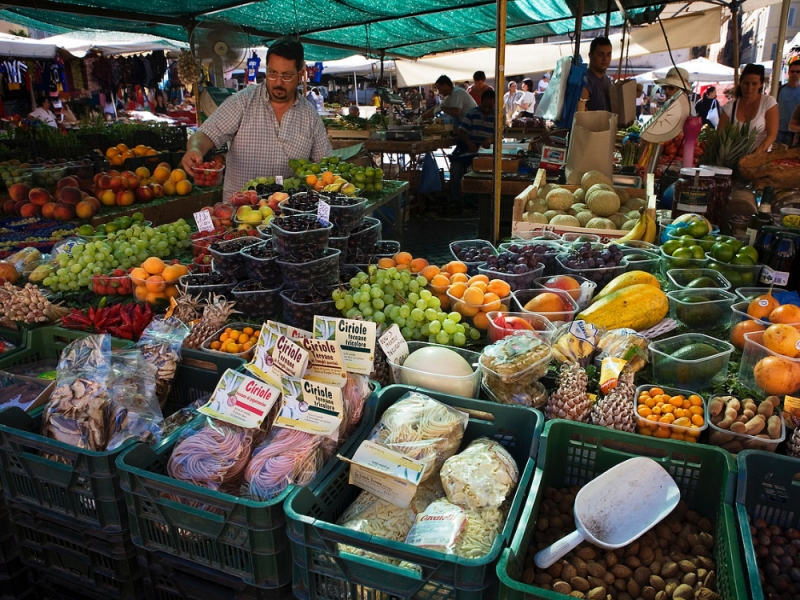
Image credit: Jorge Royan
Contrary to popular belief, the name of this piazza was derived from its origins as a field of flowers, rather than the usual fruit, flower, and vegetables market that has replaced it and now takes place every morning. If you are looking to get some Italian-made souvenirs, such as cheese, clothes, and kitchenware, rather than the typical “cheesy, tourist-y” ones, this is definitely the area you’d want to visit. As bustling as it is in the day, this spot doesn’t cease in popularity at night where it is frequented by those looking to grab an evening aperitivo.
While you’re immersed in the life of the markets and the crowd, be sure not to miss out on Bruno’s statue, easily identifiable as the man wearing a cloak. Burnt at the stake at Campo di Fiori in the 17th century for his scientific teachings which had opposed those of the church’s, this philosopher was later honoured through the building of this statue.
Things to do in Rome: Where to enjoy Roman flora and fauna
12. Stroll through the Vatican Gardens
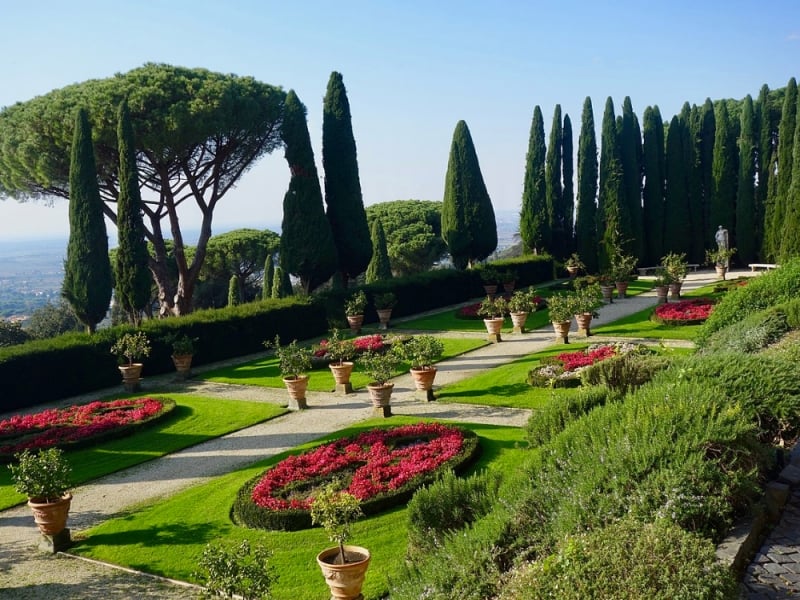
Image credit: Sonse
The Vatican Gardens are designed to be made up of many smaller themed gardens. One of the first gardens to stop at would be Lourde’s grotto where the statue of Mary stands, and is intended for Popes to come and pray to.
Another would be the Italian garden which follows the traditional Italian-styled geometric layout shaped by pine trees, cypresses, and other native trees. Even if you are not into the flora and fauna the gardens have to offer, you will be promised viewpoints of the St. Peter’s Basilica, allowing for you to take pictures from many different angles and even up close!
Note: As the Vatican Gardens and the Vatican Museums are considered a single entity, you are required to enter the museum immediately upon leaving the gardens, and re-entry is not allowed.
13. Enjoy the tranquillity of the Roman Botanical Gardens
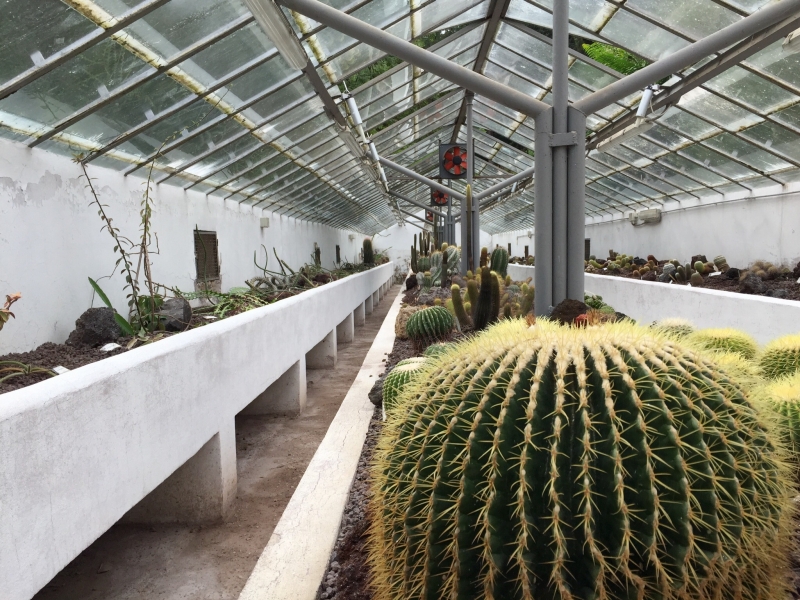
Image credit: robb239
If you are looking to escape the scorching summer heat in the city, make a quick walk through the streets to the right of River Tiber and find yourself in the oasis of the Roman Botanical Gardens.
Despite its large size of 12 hectares, this park is relatively easy to explore as there is a circular route which tourists can easily follow which would bring you through their greenhouses and almost 400 species of plants. As many seasonal plants are grown in these gardens, it wouldn’t be surprising to find the gardens looking different at different times of the year, following the seasonal changes.
Many Romans consider this park to be a hidden gem, even though it can be found in the middle of the city, as it is much less crowded than the more famed Vatican Gardens, and has a much cheaper entrance fee of just four euros!
Things to do in Rome: Places for centuries-old art
14. Awe at the paintings and statues in the Pantheon
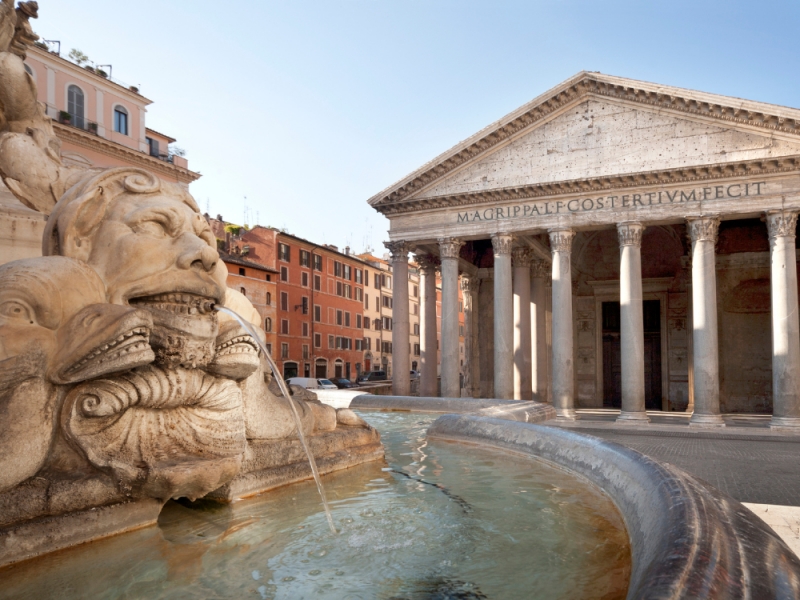
Image credit: Blueplace via Canva Pro
Originally constructed as a temple for the worship of gods and goddesses, the Pantheon later became the burial ground for famous Roman artists and kings and even that of Raphael, the famed Renaissance painter known for the Madonnas and compositional paintings in the Vatican City.
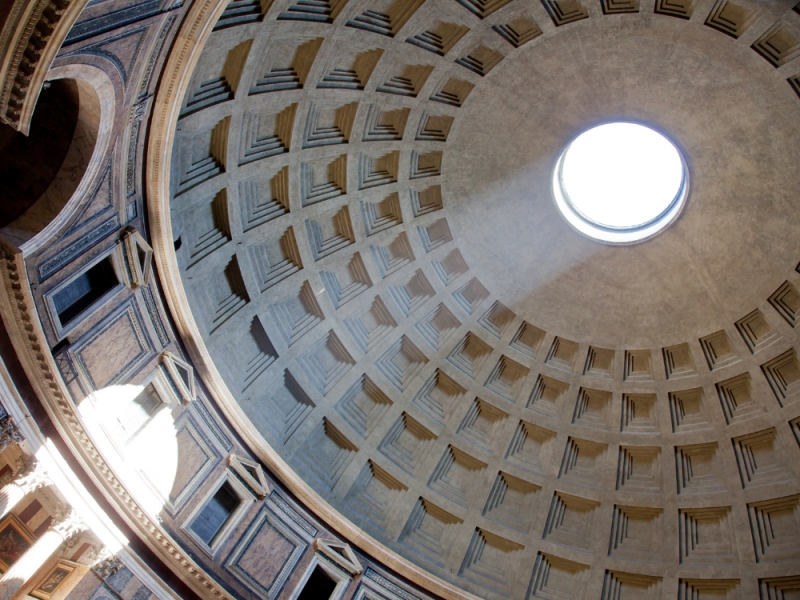
Image credit: Perseomed via Canva Pro
When you visit the Pantheon in Rome, you will be faced with a rather familiar façade as the entrance resembles that of a Greek temple with its columns that came all the way from Egypt! Right behind those columns, sits a massive dome atop the temple, called the Rotunda.
You would be surprised to find out that this dome is actually bigger than that of St. Peter’s Basilica, and upon entering the temple, while gazing up at the oculus lying in the centre of the dome, you would realise that it serves as the only source of natural light and hence is fully uncovered! Rain would fall directly into the middle of the slightly convex ground and be directed into a drainage system.
While gazing up at the dome, don’t forget to admire the paintings and statues that surround you in the massive interior. As you come to experience the vastness of the space in the Pantheon, you will understand the initial intentions of the architect to make you feel insignificant, as if you were in the very presence of the gods themselves.
15. Admire the ceilings at the Sistine Chapel
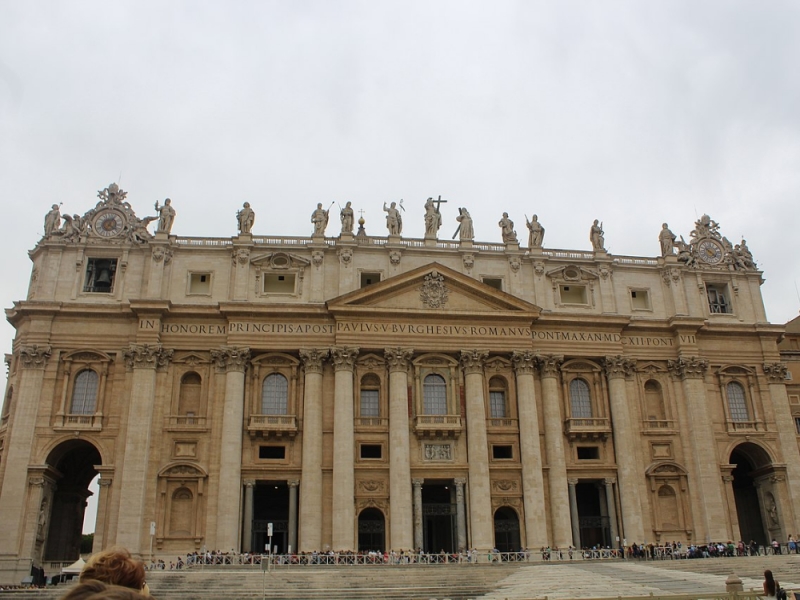
Image credit: Nicolelouisee
A trip to Rome without a visit to the Vatican City would not be complete. Likewise, a visit to the Vatican City without a visit to the Sistine Chapel would be incomplete too.
Other than serving as the ground for the election of the new Pope, it is more commonly known to tourists as one of the most famous painted interior spaces, holding Michaelangelo’s masterpieces depicting scenes from the Old Testament, key figures in the Bible, and portraits of previous popes. To view the paintings from the right side up, you would realise that you’d need to be facing the altar on the far side of the altar wall, which was intended by Michaelangelo.
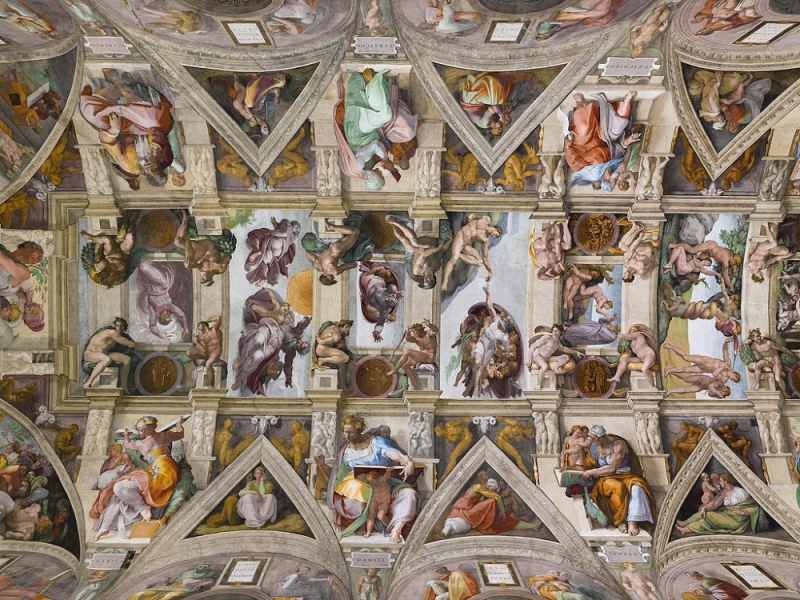
Image credit: Aaron Logan
Given the beauty of these paintings, you would be surprised to know that Michaelangelo was only known before this task to be a sculptor.
This move to assign him the task of repainting the ceilings of the Sistine Chapel was instigated by his fellow rivals in Rome who were bent on seeing him fail to eventually force him out of the city. However, rather than failing, Michelangelo not only succeeded, but also went above and beyond! And to add to the surprise, the vaulted ceiling was actually initially only painted blue and covered with golden stars before this masterpiece was born.
Note: Do be sure to book a tour to visit the St. Peter’s Basilica, the Sistine Chapel, any other of the Vatican Museums, and the Vatican Gardens as these are tourist hotspots. The tour would guarantee you a local guide and a much quicker way through the lines as they can sometimes last up to four hours!
Also read: 8 Hidden Beaches in Italy That Only Locals Know About
If this article has been convincing enough for you to already start pulling up flight and accommodation booking sites, then it’s probably a sign to start planning that well-deserved Roman holiday soon!
Featured image credit: Rui Xian Wang | Instagram




